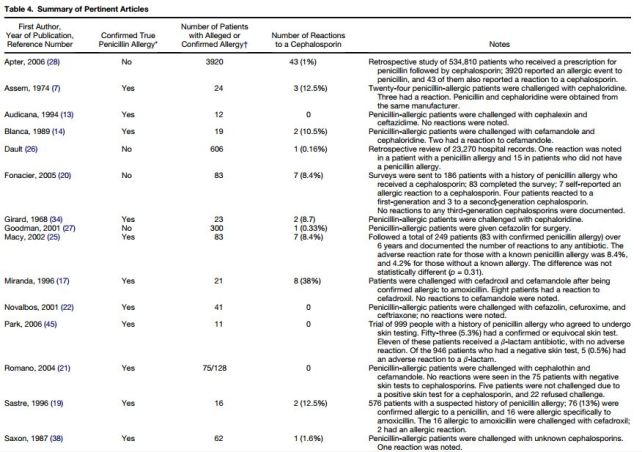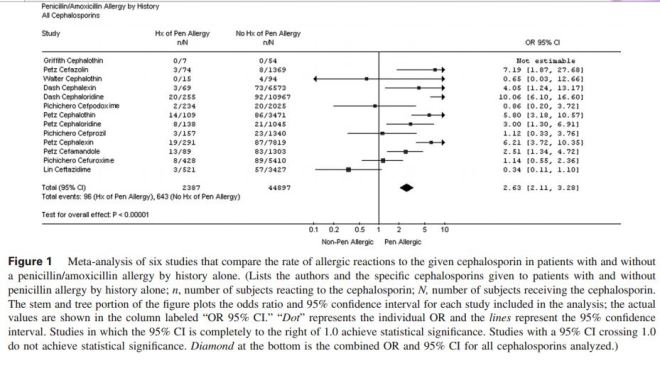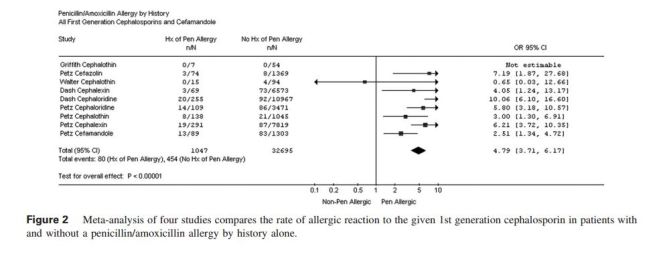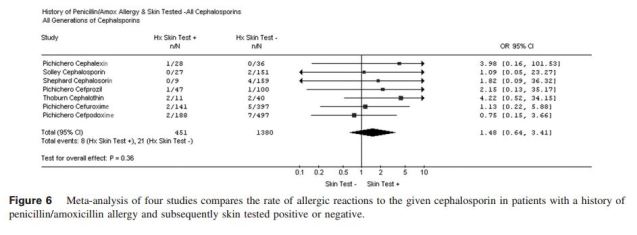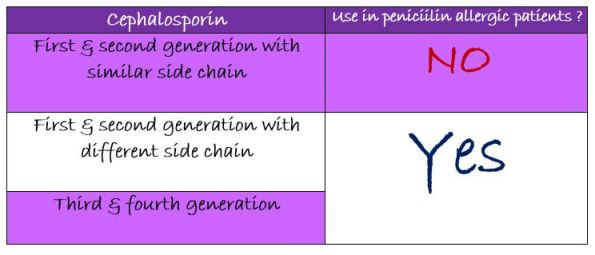What we have always learnt:
- In a patient allergic to penicillin, the cross sensitivity to any cephalosporins is 10% (it means that if you use a cephalosporin in a patient allergic to penicillin, the risk of them getting allergy is 10%)
- Is it true?
This table answers it all.
Too complicated? let’s look at the three largest retrospective studies:
- Patients who reported a history of penicillin allergy may not have true penicillin allergy confirmed by skin test..
– True penicillin allergy is IgE mediated.
– They may have IgG or IgM reaction causing vomiting, diarrhea or non specific rash. - The cross allergy between penicillin and cephalosporin is around 1%.
Let’s look at this meta-analysis by Pichichero et al.
Cross sens of penicillin and cephalosporin in patients who reported having penicllin allergy (history alone)
Incidence rate across all generations = 96/2387 = 4%
Cross sens of penicillin and cephalosporin in a patient with penicillin allergy confirmed by skin testing:
Incidence in (+) skin test = 8/451 = 2%
- Likely to reflect rate of cross sens closer to reality since penicillin allergy here is confirmed to be a true IgE reaction.
Why is this so?
- Cross allergy has been implicated due to similar R1 side chain (ie, cefaclor, cefadroxil, cefatrizine, cefprozil, cephalexin,and cephradine – main first and second generation cephalosporins).
Conclusion
- Not all patients with history of penicillin allergy has true allergy.
- As seen above, positive skin test to penicillin does not predict response to cephalosporins (21 cases happened in negative skin test as shown in the meta-analysis)
- True cross allergy is only 1-4%
– And limited to only a few first and second generation cephalosporins.
– Basically among the lists, only Keflex (cephalexin) is commonly used now for cellulitis and osteomyelitis. - Avoid first and second generation cephalosporins with similar side chains. First and second generation with different side chains should be used instead.
- Third and fourth generation cephalosporins have negligible cross sens with penicillin.
References:
James D. Campagna, MD, Michael C. Bond, MD, Esteban Schabelman, MD, MBA, and Bryan D. Hayes, PHARMD. THE USE OF CEPHALOSPORINS IN PENICILLIN-ALLERGIC PATIENTS:A LITERATURE REVIEW. The Journal of Emergency Medicine, 2012;42(5):612-20
Michael E. Pichichero, MD, and Janet R. Casey, MD, Rochester, NY. Safe use of selected cephalosporins in
penicillin-allergic patients: A meta-analysis. Otolaryngology–Head and Neck Surgery (2007) 136, 340-347
